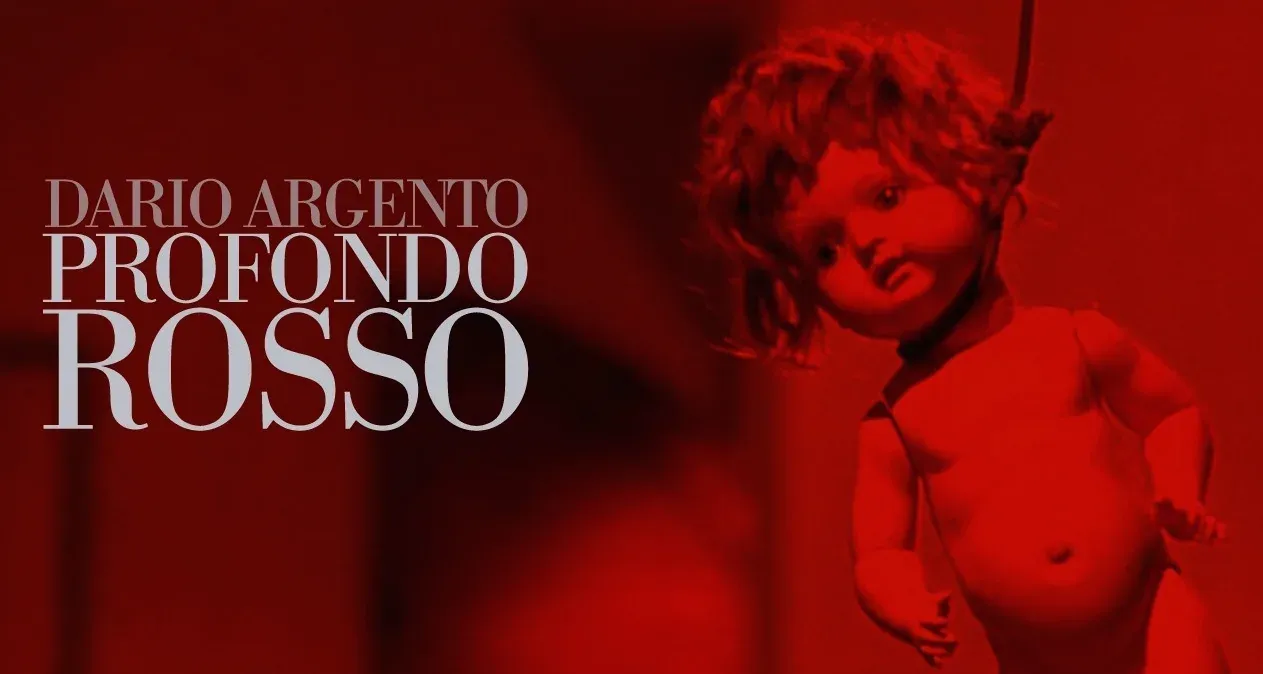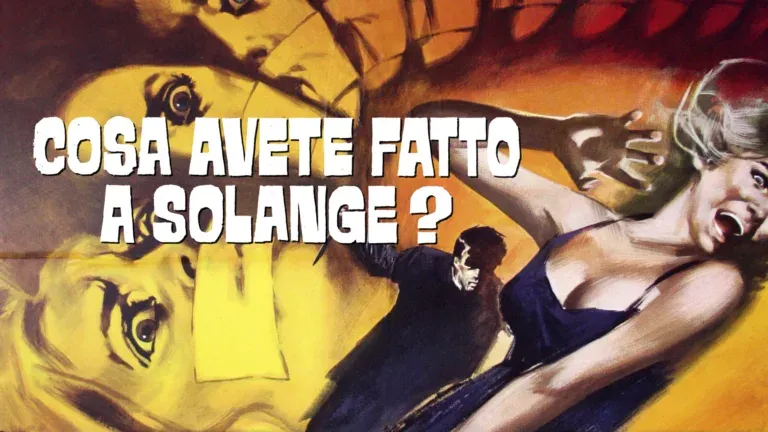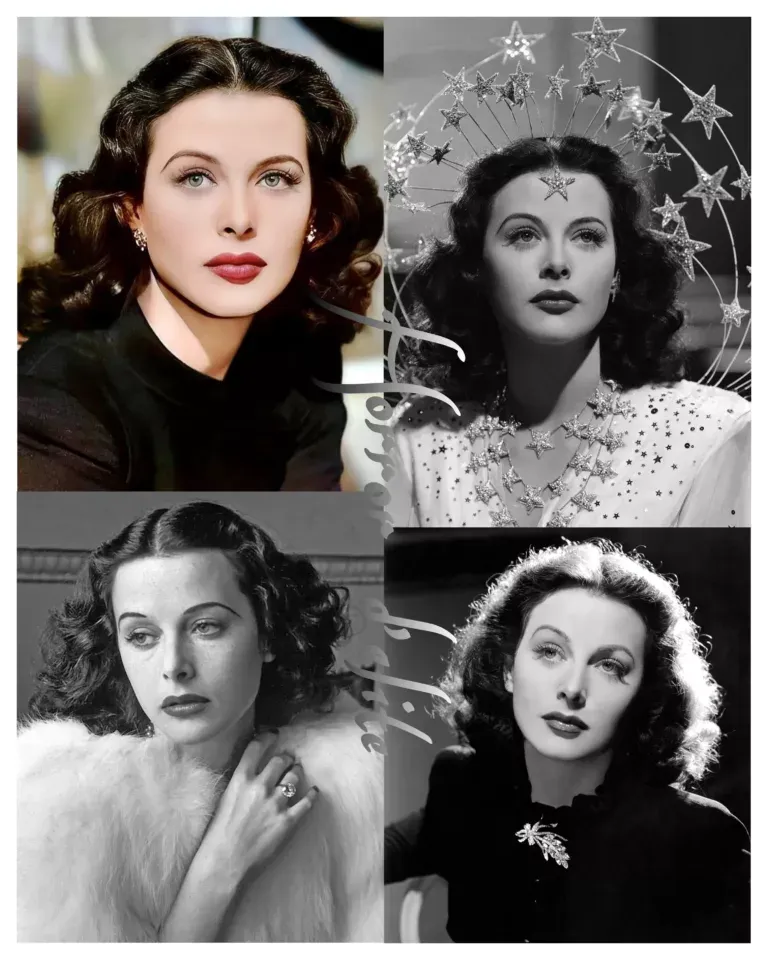Deep Red: The Cut Scene
Original Title: Deep Red
Year: 1975
Director: Dario Argento
Screenplay: Dario Argento, Bernardino Zapponi
Main Cast: David Hemmings, Daria Nicolodi, Gabriele Lavia, Macha Méril
Genre: Giallo, Horror
Soundtrack: Goblin, Giorgio Gaslini
Introduction
Deep Red is one of Dario Argento’s most iconic films, a master of Italian giallo and horror. Released in 1975, the film is known for its intricate plot, innovative use of music, and unique visual style. Deep Red not only solidified Argento’s reputation as one of the most talented directors of his time but also profoundly influenced the giallo and horror genres internationally.
Plot
The story revolves around Marcus Daly (David Hemmings), a British jazz pianist living in Rome. After witnessing the brutal murder of a famous German psychic named Helga Ulmann (Macha Méril), Marcus finds himself caught up in a series of unsettling events. Determined to uncover the identity of the killer, Marcus begins investigating with the help of journalist Gianna Brezzi (Daria Nicolodi).
During the investigation, Marcus uncovers a series of clues that lead him to an abandoned villa and an eerie childhood painting. As he gets closer to the truth, the danger escalates, culminating in a series of breathtaking twists and a memorable climax that reveals the true identity of the killer.
Trivia and Background
Collaboration with Goblin
One of the most distinctive features of Deep Red is its soundtrack, composed by the Italian progressive rock band Goblin. This collaboration was a turning point for both: for Argento, who found the perfect musical accompaniment for his visual style, and for Goblin, who gained fame through the film’s success. The soundtrack, with its obsessive themes and driving rhythms, significantly contributes to the film’s tension and atmosphere.
Screenplay and Collaboration with Bernardino Zapponi
Argento co-wrote the screenplay with Bernardino Zapponi, a screenwriter who had previously worked with Federico Fellini. Their collaboration led to a plot rich in detail and psychological nuance, with a particular focus on dreamlike and surreal elements. Did you know that… the first written draft of Deep Red was three hours long? Over 500 pages… After reading it, Dario Argento’s father and brother suggested that the audience of the time was not ready for such a long film, so Dario cut it down to 321 pages…
Daria Nicolodi: Muse and Collaborator
Daria Nicolodi, who plays journalist Gianna Brezzi, not only had a crucial role in the film but was also a key figure in Argento’s life. The two had a romantic and professional relationship that influenced many of the director’s subsequent works. Nicolodi significantly contributed to the screenplay and character development.
The Iconic Scene of Helga’s Murder
One of the most memorable scenes in the film is the murder of the psychic Helga Ulmann, who is killed in a brutal manner. The scene is famous for its innovative use of the camera and visual intensity, becoming one of the most iconic sequences in horror cinema.
The Villa of Horrors
The abandoned villa that Marcus explores is a central element of the film. The choice of location was crucial in creating the gothic and mysterious atmosphere that characterizes Deep Red. The villa, with its dark corridors and hidden secrets, is almost a character in itself, contributing to the film’s suspense and anguish.
Special Effects and Cinematic Craftsmanship
The special effects in Deep Red were achieved with artisanal but effective methods. Argento always had a very practical and detailed approach to visual effects, preferring realistic and tangible solutions rather than relying solely on technology. This approach gives the film a sense of realism and brutality that amplifies the horror.
Influences and References
Deep Red is influenced by various elements of giallo and horror cinema, as well as painting and music. Argento cited directors such as Alfred Hitchcock and Mario Bava, as well as painters like Edward Hopper, whose use of light and shadow inspired many of the film’s shots.
The Cut Scene
Among the scenes we never saw from Deep Red, because they were never filmed, is an eerie moment of an unsuspecting encounter between the killer and the protagonist Marc (David Hemmings) shortly after the iconic opening sequence where the killer is brazenly introduced without us realizing it… The sequence present in the screenplay and later cut was set in the medium Helga Ulmann’s apartment shortly after her murder. After the first visit to the house, Marc returns to pay his respects to the corpse, preserved in a room never before shown to the audience. The room is dimly lit by long candles, and the protagonist approaches Helga Ullmann’s body, caresses her hair, and then makes the sign of the cross. At one point, convinced he has heard a noise, Marc turns his head sharply—writes Dario Argento—It seems like an hallucination, but Marc is now uneasy. As a precaution, he hides in a shadowy area, pressing against the wall until he becomes invisible. When the noise repeats, the viewer hears it too: it’s footsteps approaching. Marc holds his breath and waits. The killer has come looking for him because he is the only witness… but not seeing him, leaves…
Performances
David Hemmings delivers a magnetic performance as Marcus Daly. Already known for his role in Michelangelo Antonioni’s Blow-Up, Hemmings brings an introspective and vulnerable quality to his character, who is thrust into a world of terror and mystery.
Daria Nicolodi is perfect as Gianna Brezzi, the determined and courageous journalist. The chemistry between Nicolodi and Hemmings is palpable, adding an extra layer of emotional depth to the film.
Macha Méril, although she has a relatively brief role as Helga Ulmann, leaves a lasting impression with her intense and unsettling performance.
Critical Reception
Upon its release, Deep Red received a positive reaction from both critics and audiences. The film was praised for its direction, innovative soundtrack, and gripping plot. Over the years, Deep Red has become a classic of horror and giallo cinema, regarded by many as one of Dario Argento’s best works.
The film has had a lasting influence on many directors and has helped define the standards of the genre. Argento’s ability to combine elements of psychological horror, thriller, and mystery in a single work has been widely recognized and appreciated.
Influence and Legacy
Deep Red has had a significant impact on horror and giallo cinema, both in Italy and internationally. Its combination of atmosphere, suspense, and brutality has inspired numerous filmmakers and helped establish Dario Argento as a prominent figure in the genre.
The Goblin soundtrack has become iconic and has influenced many other horror film scores. The collaboration between Argento and Goblin continued in other films, including Suspiria, further consolidating their influence in the horror cinema landscape.
The film has also contributed to creating a visual aesthetic that has been emulated and reinterpreted in many other works. The innovative use of the camera, elaborate shots, and attention to visual details have made Deep Red a model for many filmmakers.
Conclusion
Deep Red is a masterpiece of horror and giallo cinema, a film that continues to fascinate and scare audiences decades after its release. Dario Argento’s direction, the compelling performances of the cast, the unforgettable Goblin soundtrack, and the intricate and engaging plot all contribute to creating a work that remains a benchmark for the genre.
For film enthusiasts, Deep Red is a must-see, a cinematic experience that offers a journey into terror, mystery, and Dario Argento’s creative genius. With its ability to blend elements of psychological horror, thriller, and mystery, the film remains a lasting testament to the talent and innovation of one of Italian cinema’s greatest directors.







